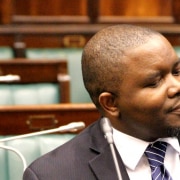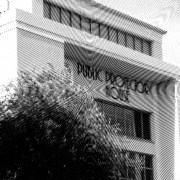|
Getting your Trinity Audio player ready...
|
Described by our Supreme Court of Appeal as a “watchdog”, the Public Protector is also often compared to an ombudsman, which is an institution that originated in Sweden, created to ensure that public officials acted in terms of the law and discharged their duties properly.
There are now a large number of such institutions around the world, including many in Africa. Tanzania and Kenya, for example, have ombudsmen, and there are several in South Africa – in their book Righting Wrongs: The Ombudsman in Six Continents, Roy Gregory and Philip James Giddings state that Southern Africa has the highest concentration of active ombudsman offices on the continent.
While there are many variations in structure and function, depending on the circumstances in the particular countries, ombudsmen generally are established to promote people’s rights and oversee government agencies, as well as to act as a link between people and their governments.
The South African Public Protector also seeks to do these things, but the comparison to an ombudsman is only partly accurate.
The origins of our Public Protector can be found in the pre-constitutional structure of an ombudsman known as the Advocate-General, established in 1979. At the time, the Advocate-General itself was regarded as a distinctly South African institution, unique to Westminster parliamentary systems. But compared to the Public Protector, the Advocate-General’s mandate was limited, restricted to investigating the improper use of public money.
Today, the institution of the Public Protector is enshrined in the Constitution. It regulates the appointment of the public protector, and protects the public protector against arbitrary removal from office by requiring the support of a “super-majority” in Parliament before the incumbent can be removed.
And in terms of the traditional separation of powers – which has the executive, the legislature and the judiciary as the three main branches of government – the Public Protector is not considered a branch of government. Instead, it is an independent, impartial institution that is meant to provide a check on the powers of other branches of government and increase their accountability and responsibility.
It is one of the Chapter Nine institutions, those six organs of state set up under chapter nine of the Constitution to support our constitutional democracy. The Public Protector has the widest jurisdiction of these institutions, but like the other chapter nine bodies, the Public Protector is independent and is subject only to the Constitution and the law.
What are the powers of the public protector?
Our public protector also has far more extensive powers than equivalent ombudsman institutions in other countries – the Supreme Court of Appeal in the recent SABC v DA case accepted this. Generally speaking, the jurisdiction of an ombudsman is more limited; certain public administration institutions may, for example, be excluded from an ombudsman’s reach.
By contrast, South Africa’s public protector has extensive powers of investigation and can conduct investigations on his or her own initiative – although this must happen within the framework of the public protector’s jurisdiction, as found in the Constitution and the law. The public protector may also report, and has the power “to take appropriate remedial action”. It is noteworthy that no other chapter nine institution has this power.
The powers of the public protector are investigative and proactive, and require more than the passive adjudication of disputes between individuals and the government.
As the Supreme Court of Appeal held in the case between the SABC and the DA, the findings made by the public protector cannot be ignored (unless they are later set aside by a court). Other institutions also cannot put in place a parallel process to the public protector’s investigation, and then claim that the findings of their process trump the findings of the public protector.
These unique powers show the importance of the Public Protector. This importance is not just about the individual holding office, although obviously this can make a big difference. But the Public Protector as an ongoing, permanent institution plays a crucial role in making sure that public power is exercised properly. Commentators rightly identify the importance of respecting an institution like the Public Protector, regardless of who the office holder is at any particular time.
A very important aspect of this is the role the Public Protector plays in combating corruption. The Supreme Court of Appeal has described the institution as an “important defence against maladministration and corruption”, which “are capable of insidiously destroying the nation”. Indeed, one of the reasons for the good reputation of the current public protector is that she is seen as taking a strong anti-corruption stance.
It can also be argued that the process of selecting a public protector in itself strengthens democracy by prompting reflection and debate about what we expect from those who govern us, and how to hold them accountable for any shortcomings.








